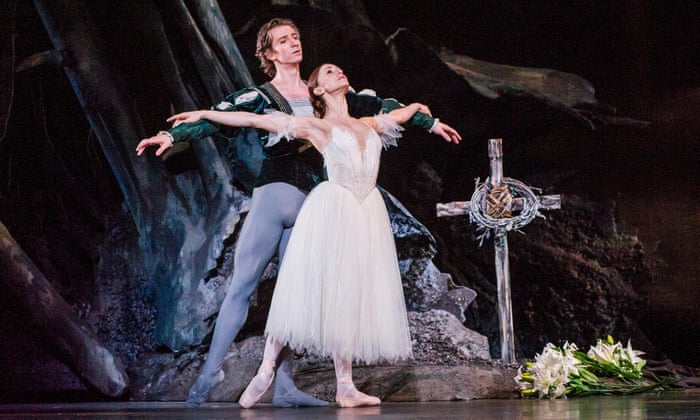So I took a half day today to take a little girl I babysit to the ballet.
She was so cute – extremely excited, all dressed up, perfectly behaved the whole time. She’s about to turn five and not very big so we had to get a cushion for her to sit on. It was totally adorable.
I was actually really happy to be seeing Swan Lake. I got some last minute tickets in the fall from the Barnard dance department but I was way on the side and only had a partial view of the stage. This time we had amazing tickets – center orchestra, not too far back.
I’m not as familiar with ABT as I am with NYCB, as proved by a quick perusal of the program. I recognized only a handful of names. Hee Seo was dancing Odette/Odile, but I had never seen her before so I was interested to see how she did. Siegfried was being danced by Marcelo Gomes who is always perfect.
Hee Seo turned out to be gorgeous. She has beautiful legs and feet and extremely expressive arms (which is super necessary for Odette especially). Odette/Odile is a hard role – one because it’s a marathon and two because they’re basically polar opposites – but Hee did a wonderful job.
If I had to criticize, I’d say she’s not really a turner. Her fouettes, the big showstopper moment in act III, were not great. There was a lot of movement and she never pulled in for multiples, not even at the end. Not that I should really be talking, my fouettes are atrocious, but there you are. She also seemed to be struggling a bit with the step overs in her act II variation.
(By the way, if you want to see a stellar coda check out Gillian Murphy. Her turns start at 0:30 if you’re in a hurry although it’s worth watching the whole thing because Angel Corella is also phenomenal. I don’t love Gillian’s arms but you can’t argue with the bravura!)
Despite my nitpicks with her turns, Hee was absolutely stunning in all of the pas. She’s definitely a lyrical dancer. And when she was with Marcello – as;dlfjwa;lf. No, seriously, that is how inarticulate they make me. It was beautiful. Marcello is a gorgeous partner. And his turns! In his act III variation he did a pirouette, finished in passe, then gave us a cheeky grin and pulled in for more! God.
I was pleasantly surprised by a few of the soloists. In particular, one of the pas de trois girls and the four little swans. Four little swans was totally fierce – although I have to admit that no matter how good it is I cringe a little bit inside while I’m watching because four swans is a bitch to do. Not because it’s that hard but it’s disproportionately difficult to do anything when you’re holding hands with three other girls. Anyway, I’ll have to keep an eye out for them in the future. The corps, on the other hand, was rather messy. I know it’s early in the run but some things were really obviously not together.
The production overall is very nice, with lavish sets and costumes. I much prefer it to the City Ballet version, which looks like it was designed and painted by a child. I understand they were going for a more modern look, which I don’t object to in principle, but the execution failed spectacularly. Ah, well.
Swan Lake also has one of the most gorgeous scores ever composed for ballet (in my opinion at least). It’s Tchaikovsky at his finest. And I’m always surprised, every time I go, how much of the music I know! I could probably hum 70% of the score from memory. Considering how beautiful and complex and tragic it is, it’s very catchy.
Some people complain about the mitigation of the downer ending, but I don’t mind it. Speaking of which, Marcello got some serious air time jumping into the lake.
So that was my day; it’s interesting timing because I just started reading Mercedes Lackey’s Black Swan (recommended by Tami). I’m curious to see what she does with the story and how she adapts it to novel form. I’m only a chapter in but I was pleased to see a nod to the four swans/cygnets in the first chapter, even as I cried a little inside, thinking about those echappe heads.
AUTHOR’S NOTE: Ballet has its own language. If anyone is reading and wants a translation/elaboration/explanation just ask! Also some french words are probably spelled wrong (although I do try to get them right) and missing accents as I am not in the mood to figure out how to put them in on Blogger and no I do not want to copy-paste from Word right now.

